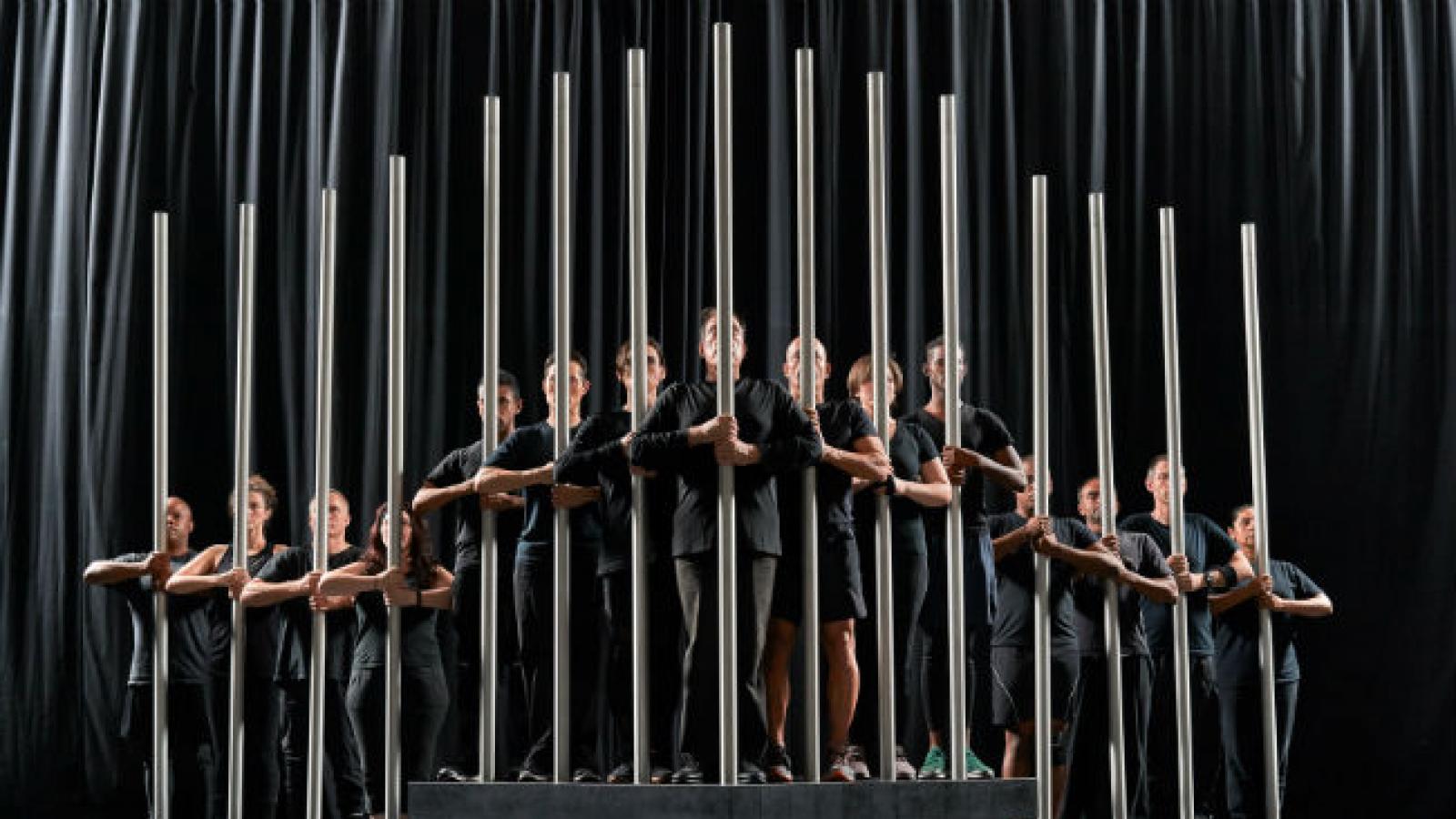Moving Veterans Toward a Place of Healing

Veterans and civilians perform in A Long Journey Home, a production created for DIAVOLO | Architecture in Motion's Veterans Project. Photo by George Simian
As the founder and artistic director of the Los Angeles-based DIAVOLO | Architecture in Motion, Jacques Heim is frequently on tour, making airport encounters with military personnel and veterans a common occurrence. “I don’t just say, ‘I thank you for your service,’” Heim said of these encounters. “The question I ask them is, first of all, ‘How are you doing? Do you need anything? How can I help you?’ And I start to have this conversation.”
In 2015, Heim made this conversation a central part of DIAVOLO’s mission when he launched the company’s Veterans Project. Through the project, area veterans are invited to participate in monthly movement workshops, where they move alongside civilian dancers including DIAVOLO company members. The goal, said Heim, is ultimately “restoration”: restoration of confidence, restoration of strength, and restoration of who veterans might have been physically, mentally, and emotionally before experiencing the trauma of war. Workshops culminate in public performances and Q and A sessions, which have been held at venues such as the Kennedy Center in Washington, DC, and the American Legion Post 43 in Hollywood.
The experience “has completely changed my life, changed my mission, changed my company,” said Heim, whose organization is a longtime NEA grantee. “I realized this is what I’m meant to do: use my art to help others and to help those men and women that sacrificed themselves for a bigger cause. That’s the mission of my performers and of DIAVOLO.”
Over the past three years, more than 500 veterans in the Los Angeles area have participated in the Veterans Project. In March, this pool will expand when DIAVOLO brings the initiative to Kansas State University, whose student body includes a large population of service members and veterans. With NEA support, the program will include movement workshops, a performance by workshop participants, discussion panel, and the creation of a handbook to document the residency’s methodologies and best practices so that other organizations might replicate the program. The Kansas State residency will serve as a pilot, with hopes of expansion to communities across the country.
Veterans Project workshops are physically intense: Heim likens himself to a drill sergeant and his dancers—civilian and military—to a platoon. “I push my dancers physically, mentally, emotionally, pushing them beyond their own limits so they can rise up, so they can discover their strengths, their vulnerability, their weakness, how beautiful they are, how powerful they are,” Heim said. “And then they feel like they can conquer anything they want.”
Part of this physical intensity comes from DIAVOLO’s unique approach, which is “architecture in motion.” In all its performances, the company incorporates dramatic architectural elements that require dancers to leap, climb, roll, and rock—it’s thrilling to watch dancers navigate this precarious, dangerous environment. For the Veterans Project, Heim said this is particularly appealing because the extreme situations require participants to rely on one another much more than they would in a traditional dance troupe, or through other types of art therapy.
“The biggest testimonial of [participating] veterans is that they wish they could go back [to the front],” said Heim. “It’s not because of the horror of the war, the places they’ve been, the experience they had. It’s the intense camaraderie. This is exactly the same feeling that I create in the studio.”
To further compound this feeling of familiarity and accessibility, DIAVOLO uses the term “movement” rather than “dance” when referring to the Veterans Project. “Dance is a very foreign word. Is it jazz? Is it hip-hop? Is it ballet? It's not like everyday humans do dance,” said Heim. On the other hand, he said, movement is a common denominator that exists far beyond the confines of artistic expression. “The first thing that we do is crawl and then walk. We move before we talk. We are movers.”
Relying on what Heim calls the “universal language” of movement also helps bridge the divide between civilians and the military community, which is another major goal of the Veterans Project. Heim believes this disconnect has formed in part because the current wars in Afghanistan and Iraq are so far away that “we don’t see it; we don’t understand it.” It’s a chasm that he too has felt, and recalls how nervous he was during the first Veterans Project workshop. “I didn’t know how I should approach them,” he said. “I didn’t know how to work with them or even to talk to them.”
But military and non-military populations are able to communicate through movement, and forge connections that might prove difficult in another setting. By including civilians in workshops and as audience members at performances, Heim said that veterans begin to feel accepted and understood by a society they often feel has abandoned them, while civilians see that uniform aside, these men and women are not so different after all.
“It's about celebrating humanity,” said Heim. “These men and women are much more than military men and women. They are human. They are beautiful humans. That has to be shown.”




